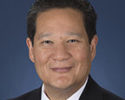Bridging the gap between education and employment
By Lee Lambert
July 22, 2020
Looking beyond the pandemic, Pima Community College is ready to help un- and underemployed people reskill for new careers.
“If it can be done online, it will be online.”
I heard a Hyundai Corp. executive make this observation in a meeting with business leaders as the world struggled to emerge from the Great Recession in 2010. It has proved prescient and consequential, as has its corollary, “If it can be automated, it will be.” Out of the economic upheaval of a decade ago, the Fourth Industrial Revolution (4IR) – artificial intelligence, cloud computing, automation, and the Internet of Things – has taken hold throughout the 2010s, fusing the digital and physical worlds.
Like some institutions of higher education, Pima Community College in Tucson, Arizona, over the past half-decade has responded to 4IR with a strategy that evaluates our curriculum, delivery methods and customers in a new way. This self-examination reflects the need to anticipate the convergence of the worlds of work and learning brought on by 4IR.
The new landscape
This spring, the COVID crisis forced Pima to accelerate its change strategy. Like the entire education sector, whatever we could put online, we did. Within a few weeks, we transitioned nearly 2,000 face-to-face classes to a variety of new synchronous and asynchronous formats. (Some 30 percent of our classes were already online.) Our numerous support services also switched to a virtual format. That Pima and its peers were largely successful should once and for all put to rest the myth that higher education is slow to change.
Now the primary challenge facing education, and the nation, is to respond to the harsh economic reality COVID has set before us: Severe unemployment and unprecedented labor market uncertainty. Millions of jobless are eager, if not desperate, to re-skill in order to embark on new careers.
Countless unemployed waitstaff no doubt covet a new career in information technology, finance or manufacturing. Curiously, a Strada Education Network survey shows that employees in those sectors are most likely to seek jobs in other, presumably safer, occupational sectors. (In April, Forbes bluntly encapsulated the post-COVID manufacturing landscape: “Prepare to Operate With Fewer People.”) However you view the data, all signs point to a period of labor churn like no other.
The COVID crisis has provided higher education with the opportunity to expose the unemployed and under-employed to forms of learning that do not lead to traditional bachelor’s or associate degrees. Pre-COVID, Pima saw evidence of this. While the number of degrees Pima awards has declined, the number of certificates awarded has remained relatively steady.
Nationally, a Strada survey indicates that by a two-to-one margin, adult learners are seeking to further their education through the attainment of “online non-academic courses, trainings or certifications” over two- or four-year degrees. As a recent McKinsey and Co. report summarizes, “This represents an opportunity for training to scale the programs built for how people actually learn best: shorter, ‘bite size’ learning modules tailored to the individual and delivered when they’re needed as part of a thoughtful learning journey.”
Community colleges such as Pima are uniquely positioned to effectively respond to this opportunity. We can span, and hopefully shorten, the distance between education and employment. We can offer a wide variety of short-term, work-based learning opportunities that are powered by emerging networks. Our workforce development team members have their ears to the ground in order to quickly address (and, ideally, anticipate) employers’ changing needs and expectations. We are trusted within our regions for offering affordable credentials that can stack up into degrees.
Perhaps most importantly, we can provide industry-recognized training, which the data show have a payoff that exceeds that of traditional degrees. A 2020 Gallup/Lumina Foundation analysis found 49 percent of high school graduates with a professional certification are most likely to be in what is considered to be a “good job,” second only to those who have earned a Ph.D. at 57 percent.
There’s more to the story! Read the full article in CC Daily.



